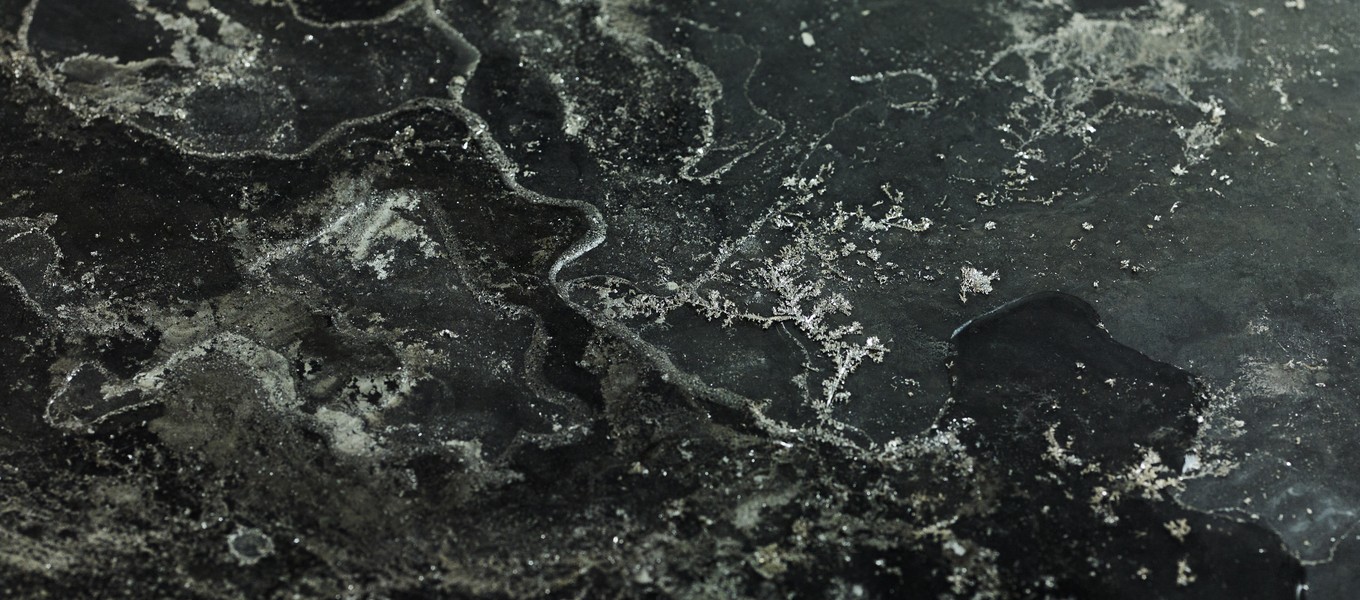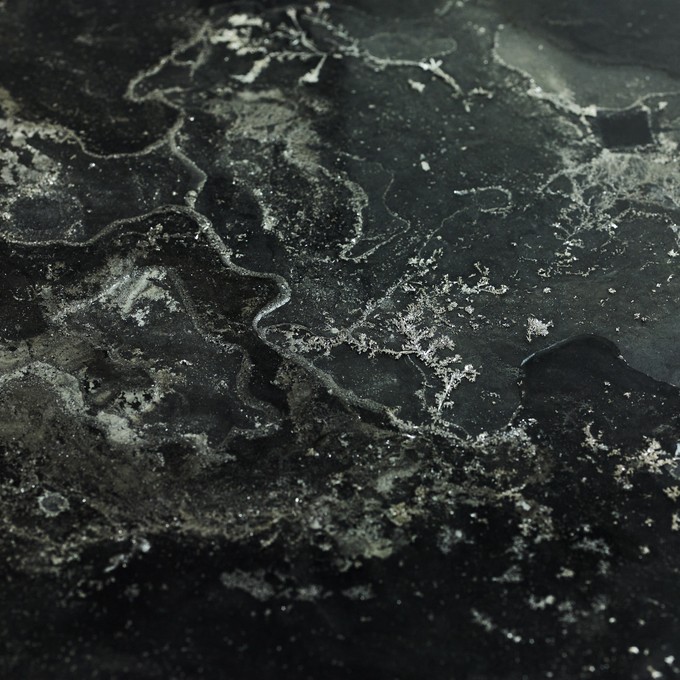Hugo Pétigny
Électrographie de l'argent - Installation - 2022
présentée dans le cadre de l'exposition Panorama 24



A solar panel from a Chinese company, suspected of having used Uighur labour, powers thirty-two bulbs that light up solar cells glued to a glass plate. These cells produce different levels of electric current by virtue of the photovoltaic effect whereby contact with a solution of water and silver nitrate triggers the formation of silver crystals on the glass plate. Depending on the number of hours of sunlight in the exhibition space, the shapes take varying amounts of time to build up until they create a glass plate covered with connected crystals whose size defines their resistance over time. Once the composition is complete, the glass plate is removed from the lighting system and becomes an electrograph with electrical energy accumulating the power from all the solar cells.
This project is the beginning of research into the creation of a new type of image, the components of which are inherited from photography, and it integrates an ecological response into its creative process. The extraction of silver, whose mines are expected to be depleted by about 2035, is the subject of this electrograph, which recalls the responsibility of the photographic medium in using silver to create photosensitive emulsion, and the continuity of this extraction in the creation of the connectors of photovoltaic cells. The infinitely small continues to be constructed on the glass plate as long as water is added and brings into view a world where silver drives the connections of the different powers of cells seeking to unite and develop.
Hugo Pétigny
Born in Le Havre in 1992, Hugo Pétigny is interested in the energies transmitted through art. After studying electrical engineering and photography in Le Havre, Hugo graduated from the University of Lille and the Beaux-arts de Tourcoing and is currently at Le Fresnoy - Studio national des arts contemporains.
Using installations and photographs, he seeks to develop processes that allow him to put into images the interactions of energies that generally occur in closed environments in order to initiate reflections on our relationship to matter.
Inspired by the writings of Solar Punk, Hugo seeks to present a world in which humans are closer to their environment thanks to exchanges with light, leading, for example, to a reconsideration of solar time or a positioning of humans with the idea of photosynthesis of plants considering particles (photons, electrons...) as characters influencing our daily actions.
Hugo Pétigny proposes a world of constant exchange with the infinitely small, using photovoltaics in particular as a formal representation of a future in which the living and the technical are interconnected. Hugo takes from the impressionists their research into light, which he studied during his youth in Normandy, and it is from op art and land art that he draws the social issues that inform his work.
